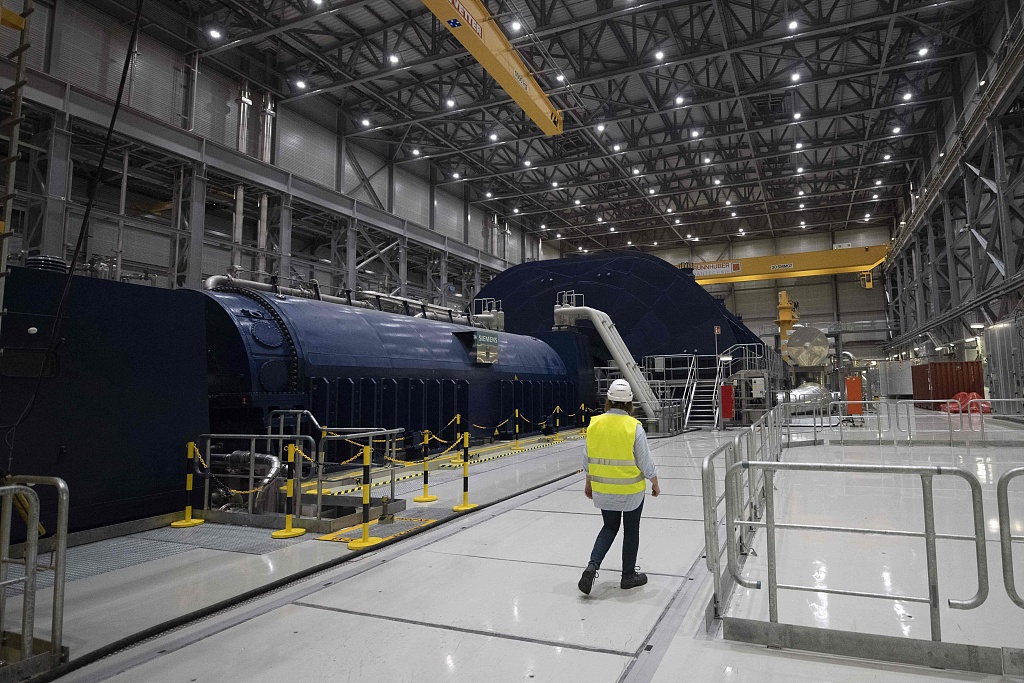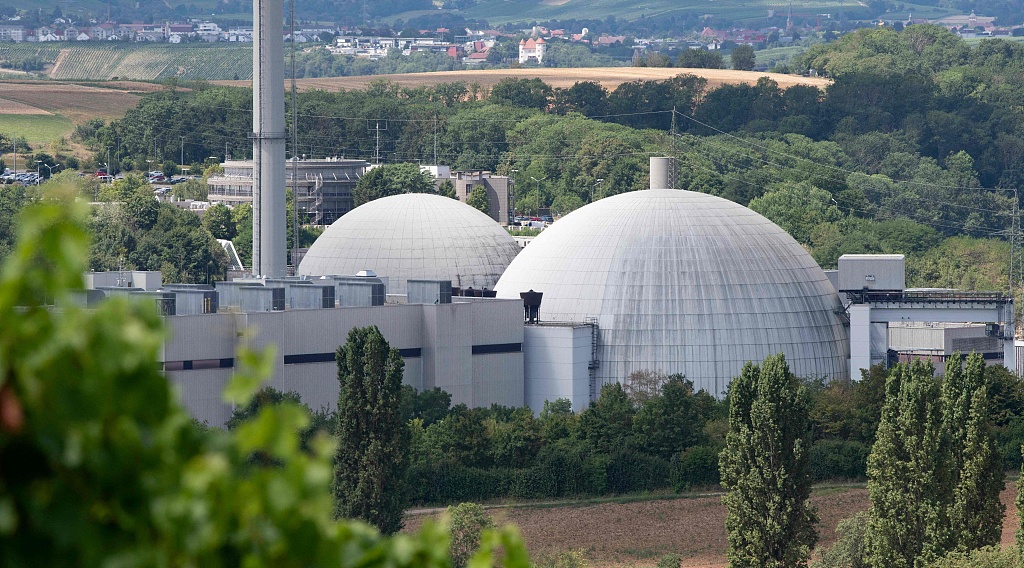
Finland's Olkiluoto 3 nuclear reactor has gone into regular service. Olivier Morin/CFP
Finland's Olkiluoto 3 nuclear reactor has gone into regular service. Olivier Morin/CFP
Finland's next-generation Olkiluoto 3 nuclear reactor, the largest in Europe, has gone into regular production after months of delays, its operator said - just hours after Germany ended its atomic era.
Olkiluoto 3, now producing around 14 percent of the country's electricity, is expected to remain operational for "at least the next 60 years," according to the site's operator TVO.
The European pressurised water reactor (EPR), already more than 12 years behind schedule, was supposed to come fully online in December, but the start was pushed back several times during its testing phase.
Built by the French-led Areva-Siemens consortium, the reactor was first started up in December 2021 and connected to the Finnish power grid in March last year.
"Test production has been completed and regular electricity production started today," TVO said. "From now on, about 30 percent of Finnish electricity is produced in Olkiluoto," which already had two reactors.
On Sunday, more than 50 percent of Finnish electricity was being produced from nuclear power, according to Finland's transmission system operator Fingrid.
The most powerful nuclear reactor in Europe, with a capacity of generating 1,600 megawatts, Olkiluoto 3 reached full power in late September for the first time since construction began in 2005.
Finland had been hoping to rely on the new reactor for its electricity needs earlier this winter, given fears of energy shortages after Russia, a major supplier to Europe, started its "special military operation" in Ukraine and cut off gas exports in response to Western sanctions.
The EPR was designed to relaunch the European nuclear industry after the Chernobyl catastrophe of 1986, and was touted as offering higher power and better safety.
But several EPR projects have been plagued by delays and billions of dollars in cost overruns.
At the end of last year, France's state-owned energy group EDF had to announce another six-month delay for a new reactor being built at Flamanville, in northwest France, pushing back its projected start to mid-2024.
Hinkley Point in Britain and the Taishan plant in China have also suffered EPR production setbacks, cost overruns and delays.
The two EPR units in China have already entered commercial production, making Olkiluoto 3 the third to go into operation in the world.

Neckarwestheim 2 is one of three nuclear reactors to cease operations. Thomas Kienzle/ CFP.CN
Neckarwestheim 2 is one of three nuclear reactors to cease operations. Thomas Kienzle/ CFP.CN
Germany, meanwhile, has officially ended decades of atomic energy use by turning off its last three nuclear reactors on Saturday.
Isar 2, Emsland and Neckarwestheim 2 were due to be shut down on December 31, 2022, but were allowed to continue in 'stretch-out mode' until April 15 due to energy security concerns following Russia-Ukraine conflict.
Europe's largest economy had been looking to leave behind nuclear power since 2002, but the phase-out was accelerated by former chancellor Angela Merkel in 2011 after the meltdown at the Fukushima nuclear plant in Japan.
The decision was popular in a country with a powerful anti-nuclear movement, stoked by lingering fears of Cold War tensions and the risk of accidents.
Lea-Valeska Giebel, German Energy Agency DENA, told CGTN: "Currently we're in a situation that we have nearly half of our energy from renewables, mostly wind and PV, so the remaining, a bit over 50 percent, comes actually from coal, gas and also from remaining nuclear power plants."
But some have criticised Germany's insistence on exiting nuclear while ramping up its reliance on coal, as it tries to manage an energy crisis cause by the war in Ukraine.
READ MORE
'Best chance' of finding alien life on Jupiter and Saturn, says ESA
Türkiye prepares for momentous elections
Climate changes forces Loggerhead turtles to migrate
Markus Soeder, the conservative premier of the southern state of Bavaria, called on the federal government to let his state continue using nuclear power.
"As long as the crisis has not ended and the transition to renewables has not been completed, we must use every form of energy until the end of the decade," Soeder told the Bild am Sonntag on Sunday.
And Christian, who lives in Niederaichbach where the Isar 2 is located, said: "I find it a bit strange that we shut down the nuclear power plants, but we will continue to import nuclear power from France, the Czech Republic, Poland. It's nonsense. In my opinion, our nuclear power plants are safer than the others."
Nuclear technology has also seen renewed popularity as a way to reduce carbon emissions, with the Swedish climate activist Greta Thunberg slamming the German move as "a mistake" if it meant burning more coal.
TVO hailed the Olkiluoto 3 reactor as "Finland's greatest climate act," adding that it would "accelerate the move towards a carbon-neutral society."
A big problem now in Germany is what to do with the nuclear waste.
In the village of Niederaichbach the arduous process of decommissioning Isar 2 now begins.
All the fuel elements in the reactor's core, which are still highly radioactive, will need to cool and then be packed into special "castor" casks for interim storage.
Josef Klaus, Niederaichbach Mayor told CGTN: "If everything goes according to plan, this dismantling should be completed between 2038 and 2040.
"What will remain is our interim warehouse with around 130 castors. This interim warehouse is approved until 2047. Unfortunately, this timeline won't work, it will take longer because Germany does not yet know where the repository location will be."
Subscribe to Storyboard: A weekly newsletter bringing you the best of CGTN every Friday
Source(s): AFP